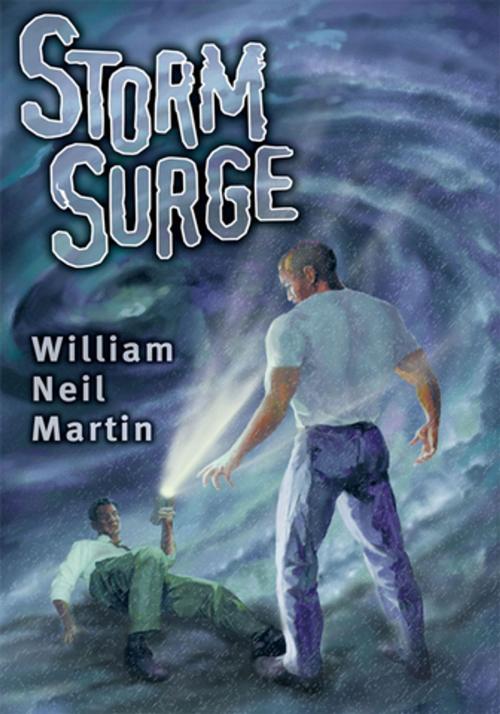| Author: | William Neil Martin | ISBN: | 9781465314628 |
| Publisher: | Xlibris US | Publication: | August 21, 2001 |
| Imprint: | Xlibris US | Language: | English |
| Author: | William Neil Martin |
| ISBN: | 9781465314628 |
| Publisher: | Xlibris US |
| Publication: | August 21, 2001 |
| Imprint: | Xlibris US |
| Language: | English |
Sgt.Garland Flowers, a homicide detective for the Los Angeles County Sheriffs Department, has a dilemma. He loves his wife and he loves his job, but his two loves are not compatible. This conflict is causing the breakup of his marriage and any hopes for a normal home life. The long hours, constant demands of the job, and Garlands preoccupation with his cases have caused the couple to separate.
The turmoil in his personal life, though, does not compare with what is in store for him in his latest case. Garland and his partner, Archie Penner, are called to investigate a murder in a ghetto community adjacent to the city of Los Angeles. The scene they encounter resembles a disaster area. "The place looks like a cyclone went through it" is how the deputy at the scene describes it. A triple murder, including a pre-adolescent girl, has been perpetrated. The apartment has been left in shambles, with furniture thrown about as if by a raging storm. Two of the victims, a man and a woman, are in the master bedroom. The mans neck is broken and the woman has been strangled. Both appear to have been dispatched by an incredibly powerful assailant. In the other bedroom is their child, the product of a racially mixed marriage. The body of the child is neatly laid out in repose. She has been smothered. No items in the room have been displaced ... quite a contrast from the other rooms.
Further assessment of the crime scene rules out robbery as a motive. Could this crime have been racially motivated? The crime has all the earmarks of an act of personal rage. With little to go on, no fingerprints, no witnesses or other clues as to the perpetrators identity or motive, the detectives have no place to turn. That is, until another multiple homicide two weeks later gives Flowers his first break. A thumbprint has been lifted from the second crime scene. The fingerprint identifies the suspect as a man by the name of B.C. Jones, a recent parolee from Soledad Prison. Jones is six feet six inches in height and weighs 280 pounds, and none of it is fat. His chest and arms are massive. For six years he has been lifting weights in prison, where he was sent for killing his father. He committed the crime with his bare hands. Jones is a mulatto, the product of a black father and a white mother. He is also simple-minded, having endured a childhood of constant physical abuse. He is a social outcast, and is extremely bitter about his racially mixed blood. In his mind, his lack of racial identity is the root of all of his problems, and he feels compelled to do something about it.
During the course of the investigation Sgt. Flowers pieces together the psychological puzzle that motivates Jones to commit these murders. Meanwhile, Jones discovers that he has been named as the suspect in these crimes and flees to the home of his only known relative, an aunt who lives in Gulfport, Mississippi. While staying with her he is arrested for a minor offense. A routine record check is made, and the Gulfport Police Department learns that Jones is wanted for murder in Los Angeles. The L. A. County Sheriffs Department is immediately notified. Sgt. Flowers is assigned the task of traveling to Mississippi to pick up the prisoner and return him to Los Angeles for trial. The Deep South is not a place Flowers has ever given any thought of visiting. After all, this is 1969, and desegregation is still new to these parts ... and Garland Flowers happens to be black. Born and reared in California, he has heard horrifying stories of how blacks are treated in the South, and is concerned about the kind of cooperation and assistance he will receive from the Southern law enforcement officers. But his reception is not what he expects. The absence of racial prejudice that he encounters upon
Sgt.Garland Flowers, a homicide detective for the Los Angeles County Sheriffs Department, has a dilemma. He loves his wife and he loves his job, but his two loves are not compatible. This conflict is causing the breakup of his marriage and any hopes for a normal home life. The long hours, constant demands of the job, and Garlands preoccupation with his cases have caused the couple to separate.
The turmoil in his personal life, though, does not compare with what is in store for him in his latest case. Garland and his partner, Archie Penner, are called to investigate a murder in a ghetto community adjacent to the city of Los Angeles. The scene they encounter resembles a disaster area. "The place looks like a cyclone went through it" is how the deputy at the scene describes it. A triple murder, including a pre-adolescent girl, has been perpetrated. The apartment has been left in shambles, with furniture thrown about as if by a raging storm. Two of the victims, a man and a woman, are in the master bedroom. The mans neck is broken and the woman has been strangled. Both appear to have been dispatched by an incredibly powerful assailant. In the other bedroom is their child, the product of a racially mixed marriage. The body of the child is neatly laid out in repose. She has been smothered. No items in the room have been displaced ... quite a contrast from the other rooms.
Further assessment of the crime scene rules out robbery as a motive. Could this crime have been racially motivated? The crime has all the earmarks of an act of personal rage. With little to go on, no fingerprints, no witnesses or other clues as to the perpetrators identity or motive, the detectives have no place to turn. That is, until another multiple homicide two weeks later gives Flowers his first break. A thumbprint has been lifted from the second crime scene. The fingerprint identifies the suspect as a man by the name of B.C. Jones, a recent parolee from Soledad Prison. Jones is six feet six inches in height and weighs 280 pounds, and none of it is fat. His chest and arms are massive. For six years he has been lifting weights in prison, where he was sent for killing his father. He committed the crime with his bare hands. Jones is a mulatto, the product of a black father and a white mother. He is also simple-minded, having endured a childhood of constant physical abuse. He is a social outcast, and is extremely bitter about his racially mixed blood. In his mind, his lack of racial identity is the root of all of his problems, and he feels compelled to do something about it.
During the course of the investigation Sgt. Flowers pieces together the psychological puzzle that motivates Jones to commit these murders. Meanwhile, Jones discovers that he has been named as the suspect in these crimes and flees to the home of his only known relative, an aunt who lives in Gulfport, Mississippi. While staying with her he is arrested for a minor offense. A routine record check is made, and the Gulfport Police Department learns that Jones is wanted for murder in Los Angeles. The L. A. County Sheriffs Department is immediately notified. Sgt. Flowers is assigned the task of traveling to Mississippi to pick up the prisoner and return him to Los Angeles for trial. The Deep South is not a place Flowers has ever given any thought of visiting. After all, this is 1969, and desegregation is still new to these parts ... and Garland Flowers happens to be black. Born and reared in California, he has heard horrifying stories of how blacks are treated in the South, and is concerned about the kind of cooperation and assistance he will receive from the Southern law enforcement officers. But his reception is not what he expects. The absence of racial prejudice that he encounters upon















